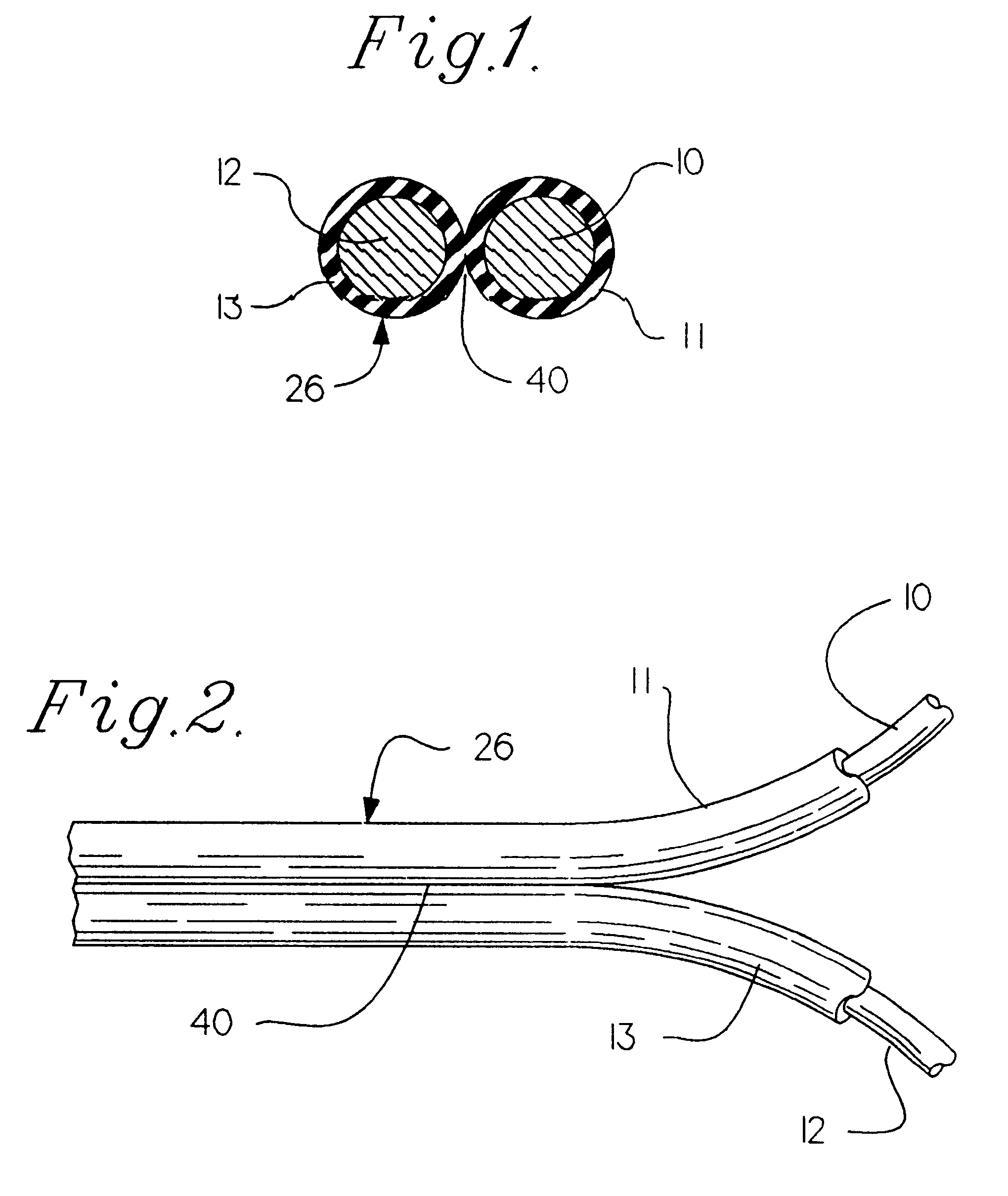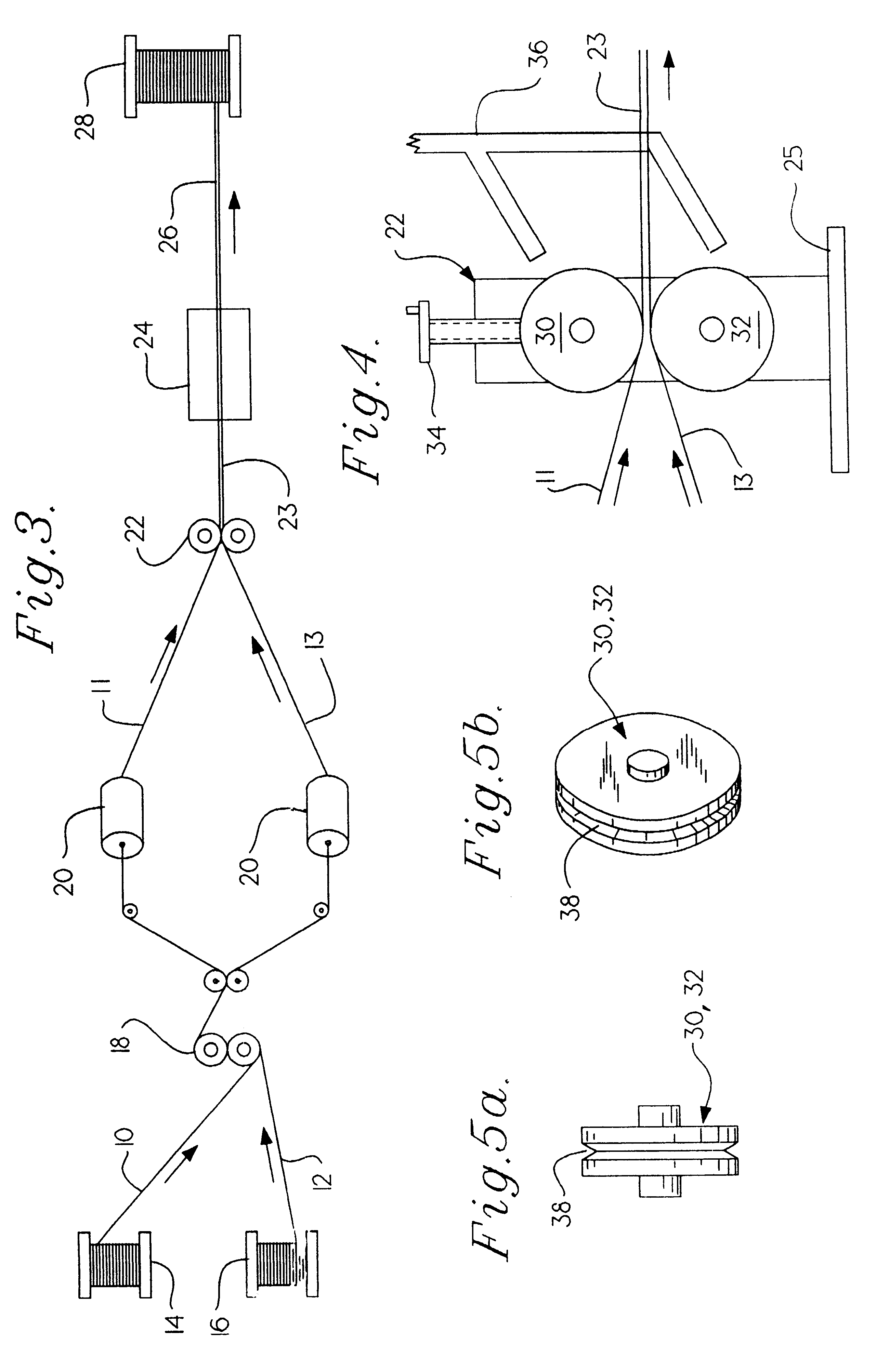Method and apparatus for making thermally bonded electrical cable
a technology of thermal bonding and electrical cables, applied in the direction of insulating conductors/cables, cables, insulated conductors, etc., can solve the problems of limited processing speed, adversely affecting critical electrical properties such as attenuation, crosstalk and transmission, and limited control of bonding characteristics, so as to achieve faster processing speed, increase concentricity, and achieve desired electrical properties
- Summary
- Abstract
- Description
- Claims
- Application Information
AI Technical Summary
Benefits of technology
Problems solved by technology
Method used
Image
Examples
Embodiment Construction
The cable of the present invention comprises separate metallic conductors spaced equal distance from each other and joined to one another with each conductor being concentrically surrounded by a thermoplastic insulating material. FIGS. 1 and 2 illustrate preferred embodiments of the cable produced by the present method and apparatus. The cable, 26, includes two conductors, 10, 12, each individually and concentrically coated with a thermoplastic insulating material, 11, 13, joined along an axially extending groove, 40.
FIG. 3 illustrates the production system embodying the present invention, wherein two lengths of bare conductor 10, 12 are continuously withdrawn from supply spools 14, 16 and moved through the system by means not shown. The conductors first pass through a tension equalizing device 18, where the tension of each is equalized with that of the other and maintained throughout the system. Next, the conductors are concentrically coated with a heated thermoplastic insulating m...
PUM
 Login to View More
Login to View More Abstract
Description
Claims
Application Information
 Login to View More
Login to View More - R&D
- Intellectual Property
- Life Sciences
- Materials
- Tech Scout
- Unparalleled Data Quality
- Higher Quality Content
- 60% Fewer Hallucinations
Browse by: Latest US Patents, China's latest patents, Technical Efficacy Thesaurus, Application Domain, Technology Topic, Popular Technical Reports.
© 2025 PatSnap. All rights reserved.Legal|Privacy policy|Modern Slavery Act Transparency Statement|Sitemap|About US| Contact US: help@patsnap.com



